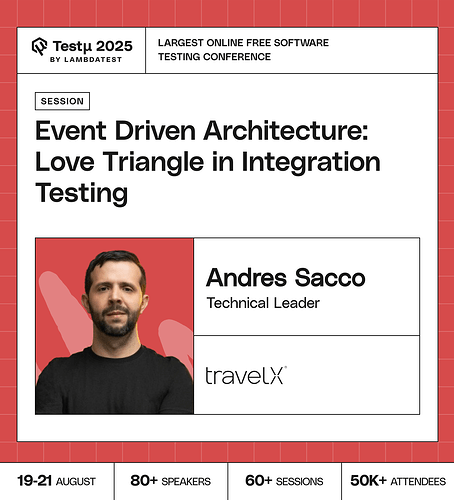Join Andres Sacco, Technical Leader at TravelX, as he explores the challenges of integration testing in event-driven architectures. Learn how to ensure your microservices and applications work reliably when events interact with databases and other systems.
Discover practical strategies for creating clear, maintainable integration tests using MongoDB, SQS, and Karate, while understanding the pros and cons of different testing approaches.
 Don’t miss out, book your free spot now
Don’t miss out, book your free spot now
How does Karate help QA test event-driven systems compared to traditional request-response approaches?
What metrics and observability tools are essential for monitoring the flow of events and identifying bottlenecks/failures within the “love triangle” during integration test execution?
How do you decide which events require integration tests versus unit tests?
What best practices are there for designing integration tests to account for the asynchronous nature of event processing?
What strategies can be used to simulate various failure scenarios within the event-driven architecture during integration tests to gauge system resilience?
How do you reliably test event-driven workflows when events can arrive late, out of order, or duplicate?
How do you ensure AI based QA tools dont answers bias from previous defect patterns?
What strategies ensure observability when testing event-driven workflows end-to-end?
When working with event - driven systems, why is it so important to create specific tests, especially since these architectures bring their own set of tricky challenges, and how do tests actually help stop things from going wrong during processes?
What is the most effective strategy you’ve found to ensure integration tests accurately verify database changes in event-driven architectures without causing test fragility?
Is there a way to balance test isolation with end-to-end validation in event-driven integration testing?
How can QA teams verify eventual consistency in event-driven systems without introducing flakiness in tests?
![]() Don’t miss out, book your free spot now
Don’t miss out, book your free spot now